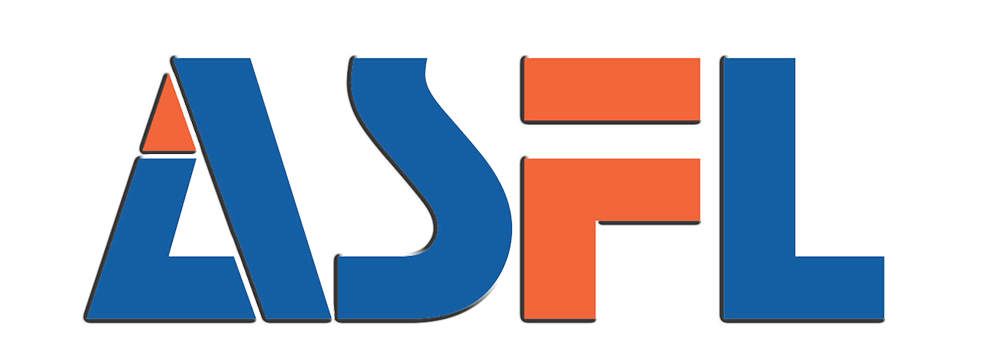Otomasyon Seviyesine Göre İçecek Dolum Makinesi Türlerini Anlamak
Manuel İçecek Dolum Makineleri ve Küçük Çaplı Operasyonlardaki Rolü
Yeni başlayanlar için manuel içecek doldurma makineleri, operatörlere tam kontrol imkanı sunarken başlangıç maliyetlerini genellikle 5.000$'ın altında tutar. Bu süreçte kaplar elle yerleştirilir ve dolum seviyeleri doğrudan kontrol edilir; bu da günde 500 birimden az şişeleme yapan girişimciler ya da test partileri üreten el yapımı içecek şirketleri gibi küçük çaplı işletmeler için idealdir. Elbette bu makineler daha fazla emek ister, ancak köpüklü sodalardan krema kıvamındaki smoothie'lara ve hatta sıcak dolumlu çaylara kadar tüm türde içecekleri karmaşık kurulum değişiklikleri gerektirmeden işlemesi açısından mekanik olarak oldukça basittir. Birçok girişimci, üretim ölçeğini büyütmeye karar vermeden önce farklı ürünlerle denemeler yaparken bu esnekliği çok değerli bulur.
Yarı Otomatik İçecek Doldurma Makineleri: Kontrol ile Verimlilik Arasında Denge
Yarı otomatik versiyonlar, dolum süreçlerinde hem insan denetimi hem de makine çalışması ile birlikte çalışır ve operatörler ayak pedalına bastığında genellikle saatte bin ile iki bin arasında konteyner işler. Çeşitli sektör raporlarına göre, bu makineler tamamen manuel işlemlerde meydana gelen tutarsız dolumları yaklaşık yarısına kadar düşürür. Küçük 8 ons boyutundaki şişelerden başlayarak daha büyük 64 ons kaplara kadar neredeyse her boyutta konteyneri doldurabilir. Belirli ürünler için özellikle avantajlı kılan şey, hava girmesini engelleyen kapalı sistemidir ve bu da ürünün tazelik süresinin uzamasına yardımcı olur. Bu durum, kaliteyi zaman içinde korumak çok önemli olan moda geçen soğuk sıkım meyve suları veya probiyotik içecekler gibi ürünler için büyük önem taşır.
Tam Otomatik İçecek Dolum Makineleri: Büyüyen İşletmeler için Ölçeklenebilirlik
Tam otomatik üretim hatları, saatte yaklaşık 10 bin şişe işleyebilir. Bu hatlar, kutuları istifleyen robotlar ve iş gücü maliyetlerini yaklaşık %60 ila %80 oranında azaltan CIP adı verilen özel temizleme sistemleriyle donatılmıştır. Bölge çapında dağıtım yapan orta veya büyük ölçekli işletmelerin çoğu zaten bu tür sistemleri kullanmaktadır. Ancak başlamak için neler gerektiğini açıkça görelim: elli binden fazla yatırım yapılması ve en az 500 metrekare fabrika alanı ayrılması beklenmelidir. Yeni modeller artık sıvı kalınlığını gerçek zamanlı olarak algılayan sensörlerle donatılmıştır. Bu akıllı cihazlar, sıradan su ya da çikolatalı süt gibi daha yoğun bir ürün olsun olmasın, dolum hızını otomatik olarak ayarlayarak hattan geçen ürün ne olursa olsun her şeyin tutarlı kalmasını sağlar.
Otomasyon Seviyesine ve Üretim Kapasitesine Göre İçecek Dolum Makinesi Türlerinin Karşılaştırılması
| Otomasyon Seviyesi | Çıkış Aralığı | Değişim Süresi | Personel Gereksinimleri |
|---|---|---|---|
| Manuel | 50-500 şişe/saat | 2-5 dakika | 2-3 operatör |
| Yarı otomatik | 800-2.500 şişe/saat | 15-30 dakika | 1-2 operatör |
| Tam otomatik | 5.000-12.000 şişe/saat | 1-2 saat | 0,5-1 operatör |
Geniş çapta referans verilen bir otomasyon sınıflandırma sistemine göre, yarı otomatik içecek doldurma makineleri aylık 20.000 birimden az üretim yapan işletmelerin %73'ü için maliyet verimliliği ve operasyonel esneklik açısından en iyi dengeyi sunar.
KOBİ'ler İçin Maliyet, Verimlilik ve Uzun Vadeli Ölçeklenebilirlik
Manuel ve Yarı Otomatik İçecek Doldurma Makinelerinde Başlangıç Yatırımı ile Uzun Vadeli Getiri Arasındaki Karşılaştırma
Manuel makineler genellikle başlangıçta yaklaşık 5.000 ABD doları tutar, ancak çok fazla elle müdahale gerektirdikleri için zaman içinde işletmelere yaklaşık %30 daha fazla mal olur. Yarı otomatik sistemler 15.000 ila 40.000 ABD doları arasında değişir ancak sızıntıları azaltır ve işlemleri önemli ölçüde hızlandırır. 2023 yılı paketleme sektörü istatistiklerine göre, küçük ve orta ölçekli çoğu işletme, geçtikten sonra yatırımını 18 ay içinde geri kazanmayı bekleyebilir. Bu yükseltilmiş sistemlerin gerçekten güzel yanı oldukça yüksek hassasiyetleridir. Bu, ürünlerin parti партиler arasında tutarlı görünmesi anlamına gelir ve bu da israf edilen malzemeleri azaltır ve müşteriler siparişlerini sorunsuz şekilde aldıklarında memnuniyetlerini artırır.
Otomasyon Seviyeleri Boyunca İşgücü Verimliliği ve Üretim Tutarlılığı
Manuel olarak ayarlamalar yapmak, sadece şişeleri ele almak ve hacimleri kontrol etmek için vardiyada yaklaşık 3 ila 4 çalışan bulundurmayı gerektirir. Şirketler yarı otomatik ekipmanlara geçtiğinde, personel ihtiyaçlarını neredeyse yarıya indirebilirler. Tam otomatik üretim hatları ise daha az iş gücü gerektirir, ancak yine de her şeyin sorunsuz çalışmasını sağlamak ve sorunları oluşmadan önce tespit edebilmek konusunda eğitimli teknisyenlere ihtiyaç duyarlar. Doğruluk rakamlarına bakıldığında, yarı otomatik sistemler yaklaşık %98 oranında tutarlı dolum sağlar. Bu, günümüzde genellikle %85 civarında seyreden çoğu manuel işlemeden çok daha iyidir. Ürün kalitesini korurken üretim kapasitesini artırmaya çalışan herkes için otomatik çözümlere yatırım yapmak bir seçenek olmaktan çıkıp neredeyse bir zorunluluk haline gelir.
Küçükten Orta Ölçekli Üretimye Geçerken Ölçeklenebilirlik Hususları
Yıllık büyüme oranlarının %15'in üzerinde olmasını bekleyen şirketlerin modüler dolum ekipman çözümlerine yatırım yapmayı düşünmeleri akıllıca olacaktır. Örneğin PET şişe doldurma makinelerini ele alalım. Bu makineler genişletilebilir nozul sistemleriyle birlikte gelir ve ileride gelecek kapaklama ve etiketleme modüllerle çalışacak şekilde tasarlanmıştır. Bu, talep arttığında tüm üretim hatlarını söküp değiştirmek zorunda kalmadan işletmelerin saatte yaklaşık 500'den 2.000'ye kadar şişe üretebileceği anlamına gelir. Tek fazlıdan üç fazlı bağlantıya kadar değişen güç seçenekleri esnekliği, bu sistemlerin farklı tesis ortamlarında kullanılabilmesini sağlar. Ayrıca dijital kontrol panelleri genellikle mevcut ERP sistemlerine doğrudan bağlanır ve böylece operasyonlar büyüdükçe ve zamanla gelişse bile her şeyin sorunsuz şekilde çalışmaya devam etmesini sağlar.
Peristaltik Pompa Dolum Makineleri: KOBİ'ler İçin Hassasiyet ve Pratiklik
Peristaltik Pompa Dolum Makineleri Nasıl Çalışır ve Doğruluk Avantajları Nelerdir
Peristaltik pompalar, sıvıları hareket ettirmek için esnek boruları sıkıştıran dönen rulolar kullanarak çalışır. Onları özel yapan şey, ürünün asla makinenin iç parçalarına temas etmemesidir. Bu durum hijyeni korur ve oldukça hassas dozaj yapılmasına olanak tanır. İçecek işleme sektöründen 2024 yılına ait bazı raporlar, bu pompaların doğruluk oranının %98,5'e kadar çıkabildiğini belirtiyor. Bu düzeydeki hassasiyet, şık içecekler veya sert düzenlemelere uyması gereken ürünler için çok uygundur. PLC kontrolleri sayesinde operatörler, dolum miktarlarını yalnızca artı eksi %1 tolerans içinde ayarlayabilir. Özel çaylar, fonksiyonel içecekler ve içeriklerinin doğru olması büyük önem taşıyan CBD içerikli ürünler gibi ürünler için bu tür bir doğruluk, kalite kontrolü açısından sadece isteğe bağlı değil, temelde zorunludur.
Yüksek Viskoziteli veya Hassas İçecek Formülasyonları için İdeal Kullanım Alanları
Bu pompalar, gerildiklerinde parçalanan veya normal pompa sistemlerinde sıkışıp kalan zorlu sıvılar için oldukça iyi çalışır. Araştırmalar, peristaltik pompaların viskozitesi yaklaşık 5.000 cP'ye kadar çıkan protein içecekleri, insanların çok sevdiği etli meyve shake'leri ve hatta bazı alkollü ekstraktlar gibi kalın maddelerle uğraşırken israf edilen malzemeyi yaklaşık %30 oranında azalttığını göstermektedir. Onları öne çıkaran şey, kesme kuvveti uygulamadan çalışmalarıdır; bu sayede bitkisel süt emülsiyonları ayrışmak yerine kararlı kalır ve probiyotiklerdeki ile soğuk sıkım içeceklerdeki faydalı bakteriler işleme boyunca bozulmadan korunur. Sadece bu özellik bile ürün bütünlüğünün en önemli olduğu birçok gıda ve içecek üretim tesisinde bu pompaların popüler olmasına neden olmuştur.
Düşük Bakım Gerektirir ve Mevcut Hatlarına Sorunsuz Entegre Edilebilir
Son endüstri rakamlarına göre, peristaltik sistemler geleneksel pistonlu doldurucularla karşılaştırıldığında işletmelere yılda yaklaşık 18.000 dolar tasarruf sağlıyor. Yaklaşık 500 saatlik çalışma süresinin ardından değiştirilmesi gereken tek şey, sadece tüp hortum. Bu sistemleri küçük ve orta ölçekli şişeleme tesisleri için çekici kılan şey, herkesin kullandığı standart DIN konektörleri sayesinde mevcut üretim hatlarının yaklaşık %89'una uyum sağlayabilen modüler tasarımıdır. Ayrıca, pek fazla bahsedilmese de aslında önemli olan başka bir fayda daha var: gıda sınıfı silikon hortum, ürün değişiklikleri arasında artık uzun süreli temizlik süreçlerine gerek kalmaması demektir. Operatörler geçişler sırasında çok fazla üretim zamanı kaybetmeden maddeleri yalnızca 15 dakika içinde değiştirebilir.
Vaka Çalışması: Peristaltik Sistemle Üretim Kapasitesinin Artırılması
Orta Batı'daki bir el yapımı kombuça üreticisi, 12 başlıklı bir peristaltik dolum makinesi kurduktan sonra üretimini %40 artırdı. Temel iyileştirmeler şunları içeriyordu:
| Metrik | Daha önce | Sonra |
|---|---|---|
| Saatlik Üretim | 240 şişe | 900 şişe |
| Dolum Doğruluğu | ±3.5% | ±0.8% |
| Ürün Değişimi | 45 dk | 8 dk |
| Sistem, kontaminasyon olmadan canlı kültür partilerini işledi ve 18 ay içinde 12 yeni perakende zincirine girmeyi sağladı. |
İçecek Dolum Makinesi Kapasitesini İşletme Büyüklüğüne ve Hedeflerine Uydurma
PET Şişe Dolum Makineleri İçin Saat Başına Şişe Sayısı ve Çıktı İhtiyaçlarının Değerlendirilmesi
Günlük 1.000–5.000 birim arasında üretim yapan küçük üreticiler genellikle saatte 200–400 şişe kapasiteli makinelera ihtiyaç duyar, buna karşılık 20.000'den fazla birim hedefleyen orta ölçekli işletmeler saatte 800–1.200 şişe kapasiteye sahip makinelerden faydalanır. Sektör raporları, büyüyen içecek şirketlerinin %73'ünün mevsimsel talep artışlarını finansal olarak aşırı yüklenmeden yönetebilmek için kapasitesinin %30 fazla olduğu ekipmanları tercih ettiğini göstermektedir.
Küçük, Orta ve Büyük PET Kaplarla Uyumluluk
Modern PET dolum makineleri, ayarlanabilir yükseklik mekanizmaları ve modüler boyun tutucular ile 100 ml'lik örnek şişelerinden 5 litrelik damacanalara kadar farklı kaplara uyum sağlar. Çoğu sistem, yeni şişe boyutları için 30 dakikadan kısa sürede, araç gereç kullanılmadan yeniden yapılandırılabilir ve çeşitli ambalaj stratejilerine sahip markaları destekler.
Üretim Kapasitesini İş Aşamasına Uydurma: Başlangıç Şirketinden Bölgesel Dağıtıma
Çoğu girişim, her dakika yaklaşık 12 ila 15 şişe işleyebilen yarı otomatik sistemlerle faaliyetlerine başlar. Ancak bölgesel dağıtıcılar için çok daha büyük kapasiteli, dakikada 120'den fazla şişe üretebilen tam otomatik hatlara ihtiyaç duyulur. Geçen yıl yapılan bir araştırmaya göre, sektörlerdeki ekipman kullanımına bakıldığında, modüler makineleri tercih eden şirketler, tüm üretim hattını değiştirmek zorunda kalanlara kıyasla genişleme maliyetlerini yaklaşık %41 oranında düşürmeyi başarmıştır. Ölçeklenebilir bu sistemlerin güzelliği, müşteri tabanları büyüdükçe kapama üniteleri, etiket uygulayıcılar ve ambalaj istasyonları gibi bileşenleri aşama aşama ekleyebilmeleridir. Bu yaklaşım, büyüyen işletmeler için başlangıç maliyetlerini yüksek tutmadan finansal olarak mantıklı bir çözüm sunar.
İçecek Dolum Makinesi Yatırımı İçin Temel Seçim Kriterleri
Sıvı türü, viskozite ve konteyner uyumluluğu
Doğru dolum ekipmanını seçme süreci, içeceğin kendisini oluşturan unsurlara bakarak başlar. Ne kadar kalın ya da akışkan olduğu, yerçekimi beslemeli, basınçlı dolum veya pistonlu mekanizmalar arasında karar vermede büyük rol oynar. Örneğin, viskozitesi ölçek üzerinde 1.500 sentipoazın üzerinde olan çok yoğun ürünlerle uğraşırken bunu göz önünde bulundurun. Pistonlu doldurucular bu tür maddeler için yaklaşık %1 doğrulukla çalışır ve şuruplar veya konsantre karışımlar gibi ürünler için iyi bir şekilde uygundur. Buna karşıt olarak, su gibi basit içecekler, standart nozullardan kolayca akmaları nedeniyle yerçekimli sistemlerle en iyi şekilde işler. Hangi tür kaplardan bahsettiğimiz de önemli bir faktördür. Şişenin boyunun ne kadar geniş olduğu ve camdan mı yoksa plastikten mi yapıldığı gibi unsurlar, işlemlerin ne kadar sorunsuz ilerlediğini etkiler. Bunun yanlış yapılması, ileride ciddi sorunlara yol açabilir. Geçen yıl yayımlanan bir sektör raporu aslında tüm üretim duraklamalarının yaklaşık dörtte birinin uyumsuz ambalaj konfigürasyonlarından kaynaklandığını ortaya koymuştur.
Alan gereksinimleri ve fabrika yerleşim entegrasyonu
Döner doldurucular, alan sınırlı tesisler için ideal olan 8–10 m²'lik kompakt alan kaplar. Doğrusal modeller 12–15 m² gerektirir ancak bakım için daha kolay erişim sunar. Dolum, kapaklama ve etiketleme aşamaları arasında sorunsuz geçişi sağlamak için dikey entegrasyona veya hat içi konveyör uyumluluğuna uygun sistemleri önceliklendirin.
Modüler tasarım ve yükseltme yollarıyla geleceğe hazırlık
Değiştirilebilir dolum başlıklarına ve programlanabilir mantık denetleyicilere sahip makineler, sabit sistemlere göre %85'e varan oranda daha hızlı format değişimi sağlar. Yerel pazarlardan bölgesel tedarik zincirlerine kadar büyüme desteklemek amacıyla saatte 1.200 şişeye kadar ölçeklenebilen modelleri tercih edin.
SSS: İçecek Dolum Makineleri Hakkında Sıkça Sorulan Sorular
İçecek dolum makinelerinin farklı tipleri nelerdir?
İçecek dolum makinelerinin farklı tipleri manuel, yarı otomatik ve tam otomatiktir. Her tip kontrol, verimlilik ve ölçeklenebilirlik açısından farklılık gösterir.
Peristaltik pompalı dolum makineleri nasıl çalışır?
Peristaltik pompalar, dönen rulolarla esnek boruları sıkıştırarak sıvıları hareket ettirir ve bu da doğruluk sağlar, ürün kirlenmesini önler.
Bir içecek dolum makinesi seçerken hangi faktörler dikkate alınmalıdır?
Temel faktörler arasında sıvı türü, viskozite, kap uyumluluğu, yer gereksinimi ve işin ölçeklenebilirlik ihtiyaçları yer alır.
İçindekiler
-
Otomasyon Seviyesine Göre İçecek Dolum Makinesi Türlerini Anlamak
- Manuel İçecek Dolum Makineleri ve Küçük Çaplı Operasyonlardaki Rolü
- Yarı Otomatik İçecek Doldurma Makineleri: Kontrol ile Verimlilik Arasında Denge
- Tam Otomatik İçecek Dolum Makineleri: Büyüyen İşletmeler için Ölçeklenebilirlik
- Otomasyon Seviyesine ve Üretim Kapasitesine Göre İçecek Dolum Makinesi Türlerinin Karşılaştırılması
- KOBİ'ler İçin Maliyet, Verimlilik ve Uzun Vadeli Ölçeklenebilirlik
-
Peristaltik Pompa Dolum Makineleri: KOBİ'ler İçin Hassasiyet ve Pratiklik
- Peristaltik Pompa Dolum Makineleri Nasıl Çalışır ve Doğruluk Avantajları Nelerdir
- Yüksek Viskoziteli veya Hassas İçecek Formülasyonları için İdeal Kullanım Alanları
- Düşük Bakım Gerektirir ve Mevcut Hatlarına Sorunsuz Entegre Edilebilir
- Vaka Çalışması: Peristaltik Sistemle Üretim Kapasitesinin Artırılması
- İçecek Dolum Makinesi Kapasitesini İşletme Büyüklüğüne ve Hedeflerine Uydurma
- İçecek Dolum Makinesi Yatırımı İçin Temel Seçim Kriterleri
- SSS: İçecek Dolum Makineleri Hakkında Sıkça Sorulan Sorular





